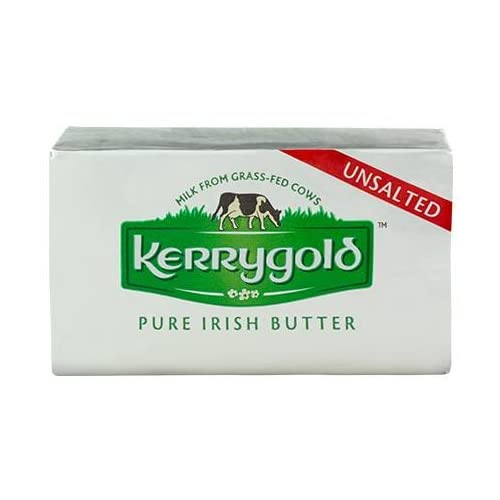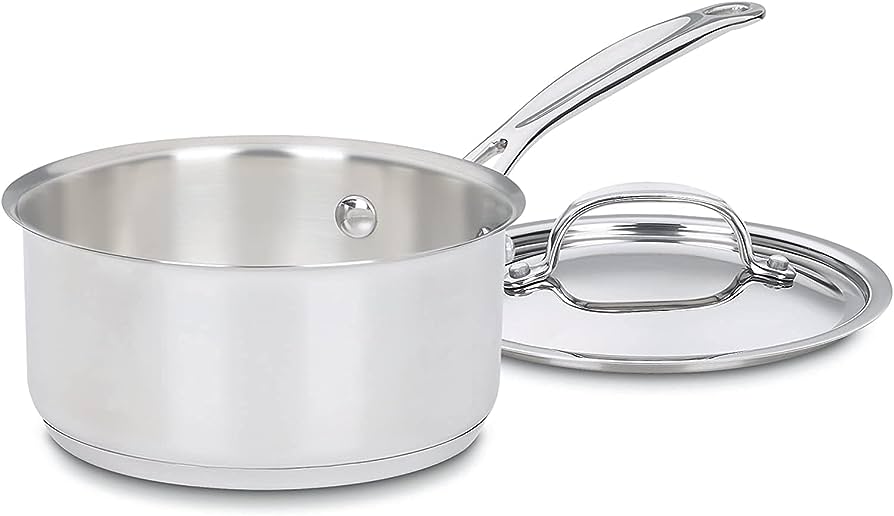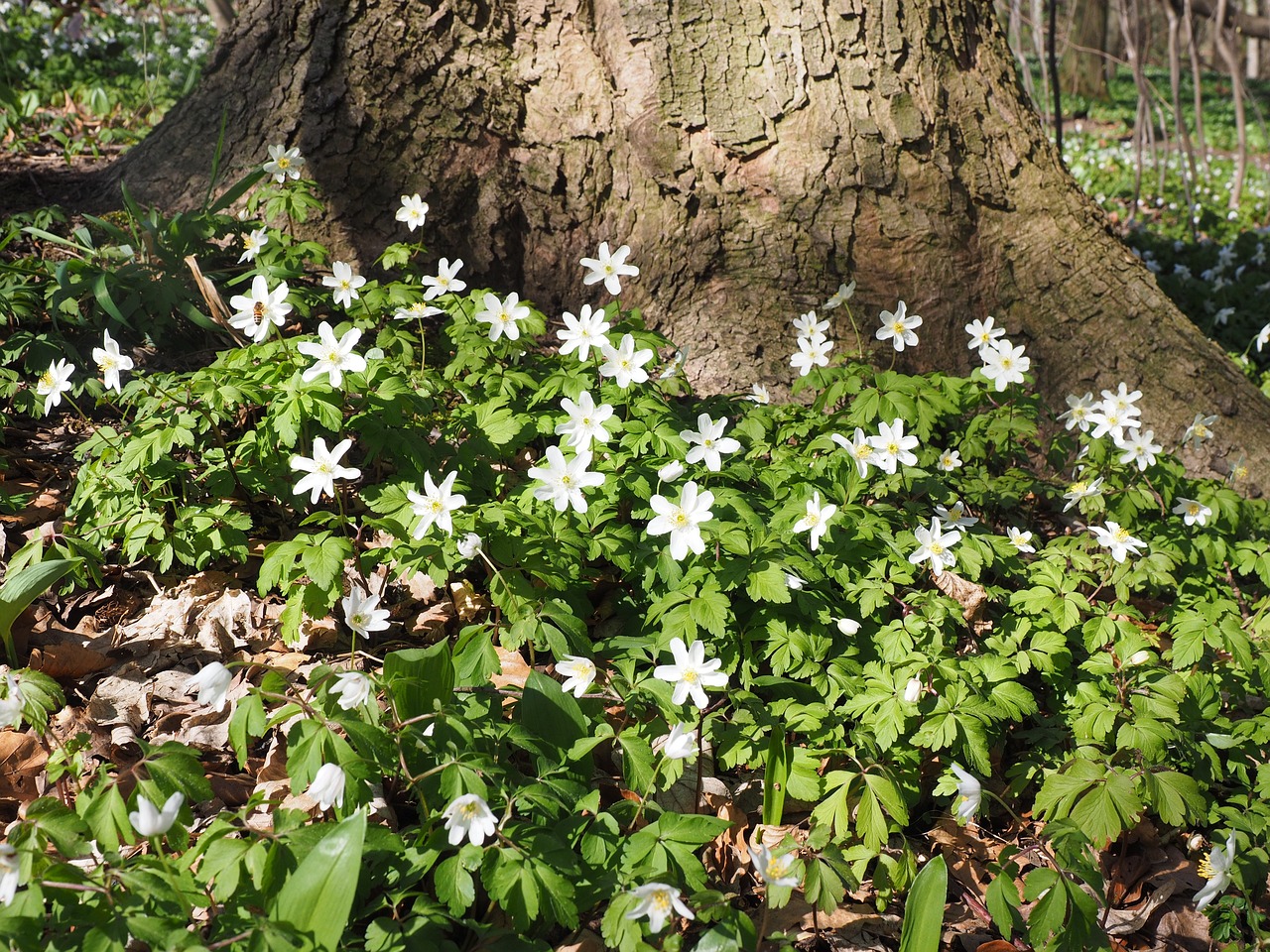Introduction
Ghee, often referred to as “liquid gold” in Indian cuisine, is a staple ingredient known for its rich flavor and numerous culinary uses. This clarified butter has gained popularity worldwide for its versatility and health benefits. The good news is that you don’t need to rely on store-bought ghee; you can easily make it at home. In this step-by-step guide, we will walk you through the process of making ghee in the comfort of your own kitchen.
Ghee, often celebrated as “liquid gold” in the vibrant tapestry of Indian cuisine, holds a revered place in culinary traditions that span generations. This staple ingredient, known for its luxuriously rich flavor and multifaceted uses, has transcended borders and earned its place in kitchens worldwide. Beyond its culinary versatility, ghee has garnered acclaim for its potential health benefits, making it a prized addition to both traditional and modern diets.
What’s even more enticing is that the journey to ghee need not begin at the store. With a few simple steps and a touch of patience, you can unlock the art of crafting ghee right in the heart of your own kitchen. In this step-by-step guide, we invite you to embark on a culinary adventure where butter is transformed into liquid gold by your own hands.
The process is a blend of simplicity and alchemy. It starts with the gentle application of heat to regular butter, setting in motion the enchanting metamorphosis that defines ghee. As the butter slowly simmers, the water content gracefully evaporates, and the milk solids, like a storyteller in a grand performance, separate from the pure, golden butterfat.
The careful straining that follows is akin to the closing act of a grand theatrical performance. With patience and attention to detail, the liquid is meticulously strained to ensure that all milk solids and impurities are left behind. What remains is a precious elixir—ghee—a testament to the power of simplicity and craftsmanship.
As you delve into this step-by-step guide, you’ll discover that making ghee is not just a culinary process; it’s an immersion into tradition, flavor, and self-sufficiency. It’s a way to connect with the rich history of Indian cuisine while embracing the health-conscious choices of today’s culinary landscape.
So, prepare to embark on this delightful journey, and let your kitchen be the stage where regular butter transforms into liquid gold. As you savor the aroma and flavor of homemade ghee, you’ll not only gain a newfound appreciation for this culinary gem but also enjoy the satisfaction of crafting it with your own hands.
Additionally, you can find further information on this topic by visiting this page: How To Make Ghee In 5 Easy Steps: A Simple Ghee Recipe
Before we dive into the process, let’s understand what ghee is. Ghee is essentially clarified butter that is made by simmering regular butter until it reaches a state where the milk solids separate from the pure butterfat. This process not only intensifies the butter’s flavor but also removes water content, making ghee suitable for higher-temperature cooking due to its higher smoke point.
Before we embark on the journey of crafting this culinary treasure, let’s take a moment to unravel the essence of ghee. At its core, ghee is a golden elixir born from the transformation of regular butter through a carefully orchestrated process. This metamorphosis involves simmering butter until it undergoes a remarkable transformation, resulting in a substance that is nothing short of sublime.
Ghee begins as humble butter, but it is in the alchemical process of its creation that it truly shines. The first step is to gently heat the butter, allowing it to slowly melt and transform. As the butter warms, it undergoes a remarkable metamorphosis. The water content within the butter starts to evaporate, and the milk solids begin to separate from the pure, liquid gold that is the butterfat.
This is where the magic happens. The butterfat undergoes a transformation, intensifying in flavor and aroma. The milk solids, which have served their purpose in the realm of butter, take on a toasted hue, imparting a rich, nutty flavor to the liquid. This process, performed with meticulous care, is what gives ghee its distinctive taste and aroma, setting it apart from regular butter.
But the transformation doesn’t stop there. As the milk solids are skimmed away, what remains is the pure essence of butterfat. This essence, free from water and milk solids, is the heart and soul of ghee. It’s a substance of remarkable stability, boasting a higher smoke point compared to regular butter. This higher smoke point means that ghee can withstand higher temperatures without breaking down or producing acrid, burnt flavors, making it an ideal choice for sautéing, frying, and other high-heat culinary endeavors.
The beauty of ghee lies not only in its flavor but also in its versatility. It is a prized ingredient in cuisines around the world, from Indian curries to Middle Eastern delicacies. Its ability to enhance the taste of dishes while providing the benefits of clarified butter, such as extended shelf life, makes it a cherished staple in kitchens worldwide.
So, as we venture into the art of crafting ghee, let’s remember that we are engaging in a tradition that spans centuries and cultures. We are transforming a simple ingredient into a culinary masterpiece—a substance that elevates dishes to new heights of flavor and aroma. Ghee is more than just clarified butter; it is a testament to the alchemy of cooking, where simple ingredients become something truly extraordinary.
Additionally, you can find further information on this topic by visiting this page: How to Make Ghee – Easy Homemade Ghee Recipe | Downshiftology

To make ghee at home, you’ll need the following:
nullFor a comprehensive look at this subject, we invite you to read more on this dedicated page: How to Make Ghee: A Step-by-Step Guide | Alexandra’s Kitchen

You can use any quantity of unsalted butter, depending on how much ghee you want to make.
The flexibility of making ghee lies in its simplicity – you can use any quantity of unsalted butter, depending on how much ghee you want to make. Whether you’re preparing a small batch for personal use or a larger quantity for culinary purposes, the process remains the same, allowing you to tailor your ghee production to your specific needs.
Personal Use: For those who use ghee occasionally or in small quantities, starting with a smaller amount of unsalted butter is practical. A small saucepan and a few sticks of butter can yield enough ghee to last for weeks. This approach ensures that you always have fresh, homemade ghee on hand for cooking or drizzling over dishes like rice or vegetables.
Culinary Creations: If you’re a culinary enthusiast or a professional chef, you might opt for a more substantial quantity of unsalted butter to produce larger batches of ghee. This approach can save time and effort in the long run, as you’ll have a generous supply of ghee available for various recipes and culinary applications.
Customization: Making your ghee allows you to customize its quantity according to your preferences. You can experiment with different quantities to find the right balance between convenience and freshness, ensuring you have an ample supply without excessive preparation.
Storage Convenience: Ghee has a long shelf life, especially when stored in a cool, dry place or airtight container. Preparing larger quantities at once can be convenient for extended use, reducing the need for frequent preparation.
Economical: Preparing ghee from larger batches of unsalted butter can be a cost-effective option, especially if you regularly use ghee in your cooking. Buying butter in bulk and converting it into ghee can potentially save you money compared to purchasing pre-made ghee products.
Gifts and Sharing: Homemade ghee makes a thoughtful and unique gift. By making larger quantities, you can package and share this flavorful ingredient with friends and family, allowing them to enjoy the benefits of homemade ghee.
In essence, the beauty of making ghee is its versatility. Whether you’re looking to create a small batch for personal use or a larger quantity for culinary exploration or sharing, the process remains straightforward and rewarding. By starting with unsalted butter, you have the freedom to adapt your ghee production to suit your lifestyle and culinary needs.
For a comprehensive look at this subject, we invite you to read more on this dedicated page: Homemade Ghee From Butter (Instant Pot and Stovetop) – Shweta in …

This will help distribute heat evenly and prevent the butter from burning.
Ensuring even heat distribution and preventing butter from burning is a fundamental cooking technique that can make a significant difference in the outcome of your dishes.
Even Heat Distribution: When you melt butter for cooking or baking, it’s essential to do so gently and evenly. Unevenly melted butter can lead to inconsistent cooking or baking results. For instance, in baking, it can affect the texture and structure of your baked goods, resulting in unevenly risen cakes or cookies. In cooking, it can lead to uneven browning or cooking of ingredients.
Preventing Burning: Butter has a relatively low smoke point due to its milk solids. When you heat butter too quickly or at high temperatures, these milk solids can burn, giving your dishes an undesirable bitter taste and a burnt aroma. To avoid this, it’s essential to melt butter over low to medium heat. If you’re using it for sautéing or frying, consider clarifying the butter by removing the milk solids, which can further increase its smoke point and make it more suitable for high-heat cooking.
Using a Gentle Heat Source: Another tip for preventing butter from burning is to use a low and even heat source, such as a simmer burner or a double boiler. These methods allow for a gradual and controlled melting process, reducing the risk of overheating and burning.
Constant Vigilance: Regardless of the method you choose, it’s crucial to keep a close eye on the butter as it melts. Butter can go from melted to burnt relatively quickly, so be prepared to remove it from the heat source promptly once it has fully melted.
Stirring or Swirling: Stirring the butter gently while it melts can help distribute the heat and ensure that any milk solids are incorporated into the liquid butter, reducing the likelihood of burning. Alternatively, you can swirl the pan to achieve a similar effect.
Consider Using Clarified Butter: For high-heat cooking methods like frying, sautéing, or searing, consider using clarified butter or ghee, which is essentially pure butterfat with the milk solids removed. This clarified version has a much higher smoke point and is less likely to burn.
By following these techniques and practicing attentiveness in the kitchen, you can ensure that your butter melts evenly and without burning. This contributes to the overall quality and flavor of your culinary creations, from savory dishes to baked goods, making your cooking experiences more enjoyable and successful.
Should you desire more in-depth information, it’s available for your perusal on this page: Homemade Ghee From Butter (Instant Pot and Stovetop) – Shweta in …

To strain the ghee.
Straining ghee is a critical step in the process of making this golden, clarified butter. It’s a simple yet essential technique that adds to the purity and quality of the final product. When we talk about straining ghee, we’re essentially separating the liquid fat from any solid residue or impurities. Here’s why straining is so important:
Clarification: Ghee starts as regular butter, which contains milk solids and water. During the cooking process, these milk solids separate from the pure fat, and the water evaporates. Straining helps remove any remaining traces of these milk solids and any impurities that might have developed during the cooking.
Purity and Flavor: Straining ensures that you’re left with pure, smooth, and flavorful ghee. The removal of milk solids and impurities not only enhances the taste but also extends the shelf life of ghee. The absence of these components makes ghee more stable at higher temperatures, which is why it’s often preferred for cooking.
Clarity and Aesthetics: Straining ghee results in its signature clear, golden appearance. This aesthetic quality is particularly appreciated in traditional Indian cuisine, where ghee is often used as both a cooking medium and a finishing touch to enhance the appearance and flavor of dishes.
Health Considerations: By straining out milk solids, ghee becomes virtually lactose-free, making it suitable for individuals with lactose intolerance. Additionally, ghee is often preferred over regular butter by those who are sensitive to dairy proteins, such as casein.
Versatility: Strained ghee has a higher smoke point than regular butter, making it ideal for various cooking methods, including sautéing, frying, and deep-frying. Its ability to withstand high temperatures without burning or producing smoke adds to its versatility in the kitchen.
The straining process typically involves using a fine-mesh strainer or cheesecloth to separate the clear, liquid ghee from any remaining particles. The strained ghee is then collected and stored in a clean, airtight container for future use.
In summary, straining ghee is not just a culinary step; it’s a key part of the transformation process that turns butter into a highly prized, versatile cooking ingredient. It contributes to the clarity, flavor, and quality of ghee, making it a cherished element in cuisines around the world. Whether you’re preparing a traditional Indian dish, sautéing vegetables, or baking, strained ghee is a valuable addition to your culinary toolkit.
If you’d like to dive deeper into this subject, there’s more to discover on this page: HOW TO MAKE HOMEMADE GHEE – Pretend it’s a Donut

Cut the unsalted butter into small, evenly-sized cubes. This helps it melt more evenly and reduces the chances of splattering.
nullFor additional details, consider exploring the related content available here How to Make Ghee (Step-by-Step Guide) – Jessica Gavin

Place the butter cubes in a heavy-bottomed saucepan and turn the heat to low to medium-low. You want a gentle simmer, not a rolling boil.
When it comes to creating culinary masterpieces, the journey often begins with the simplest of ingredients, like butter. As you embark on the process of melting butter to infuse its rich flavor into your dish, there’s a crucial detail to keep in mind: the heat.
To coax out the butter’s full potential, start by placing those creamy butter cubes in a heavy-bottomed saucepan. This choice of cookware is no accident; it’s the first step in achieving the perfect buttery consistency. Heavy-bottomed pans distribute heat evenly, preventing hot spots that could scorch your precious ingredient.
Now, as you turn the heat knob, aim for that delicate balance between low and medium-low. What you’re seeking here is not the wild frenzy of a rolling boil but rather the gentle, almost tranquil embrace of a simmer. This is where culinary magic unfolds.
Why the gentle simmer, you ask? Well, when you apply slow, controlled heat to butter, it undergoes a gradual transformation. It begins to melt gracefully, separating into its distinct components: butterfat, milk solids, and water. This unhurried process allows the water to evaporate gently, while the milk solids delicately brown, infusing the butter with a nuanced, nutty aroma and flavor.
It’s in this harmonious dance of heat and butter that you unlock the secret to many savory and sweet dishes. Whether you’re crafting a velvety sauce, preparing a sumptuous dessert, or simply sautéing vegetables to perfection, the gentle simmer is your trusted ally.
So, remember, as you stand by that stovetop, poised to elevate your culinary creation, it’s the low to medium-low heat and the gentle simmer that will coax the very best from your butter. It’s a testament to the artistry of cooking, where patience and precision merge to transform the simplest of ingredients into something truly extraordinary.
For a comprehensive look at this subject, we invite you to read more on this dedicated page: How to Make Cannabutter: A Starter Guide to Weed Butter | Bon …

As the butter melts, it will go through several stages. It will first melt, then start to bubble and foam.
When you melt butter, you embark on a fascinating journey through its various stages of transformation. As the heat is applied, the solid butter begins to transition into a liquid state. This melting process is not only a practical necessity in cooking but also a culinary spectacle in its own right.
The initial stage is the gentle melting of the butter. At this point, the butter starts to loosen and dissolve into a beautiful golden liquid. It’s a mesmerizing sight, watching the solid mass yield to the warmth, creating a shimmering pool of liquid gold in your pan.
As the temperature continues to rise, you’ll notice the next captivating phase: the butter begins to bubble and foam. These tiny bubbles are created as water molecules trapped within the butter are released. The water turns into steam and rises through the butter, creating delightful frothy pockets on the surface.
This foaming stage is accompanied by a delightful aroma. The buttery scent becomes more pronounced, filling the air with its rich and appetizing fragrance. It’s a tantalizing preview of the flavors that will infuse your dish.
This bubbling and foaming process is where butter can add depth and complexity to your recipes. The heat causes the milk solids in the butter to brown slightly, introducing a nutty, caramelized flavor that can enhance the taste of your dishes.
In essence, the journey of melting butter is not just about transforming a solid into a liquid; it’s about unlocking a symphony of flavors and textures. It’s a reminder of the magic that occurs in the kitchen, where simple ingredients undergo remarkable changes, turning ordinary meals into extraordinary culinary experiences.
So, the next time you melt butter, take a moment to appreciate the fascinating stages it goes through. From solid to liquid, from shimmering to bubbling, each phase contributes to the alchemy of cooking, creating dishes that are not just nourishing but also a delight to the senses.
To delve further into this matter, we encourage you to check out the additional resources provided here: How to Make Ghee – Easy Homemade Ghee Recipe | Downshiftology

Use a spoon or ladle to skim off the foam that forms on the surface. This foam is the milk solids separating from the fat.
When you’re in the process of clarifying butter, a simple yet essential step involves using a spoon or ladle to deftly skim off the foam that gently gathers on the surface. This seemingly small act plays a significant role in transforming regular butter into its clarified counterpart by separating the milk solids from the pure, golden fat beneath.
As you apply this technique, you’re essentially removing the milk solids, which are rich in water content, from the fat. This is what gives clarified butter its hallmark clarity and higher smoke point. The foam, appearing like delicate wisps or bubbles, is the visual cue that tells you the separation process is underway.
By carefully skimming off this foam, you ensure that the resulting clarified butter is not only free of impurities but also suitable for a wider range of culinary applications. The absence of milk solids means that it won’t burn as easily at higher temperatures, making it ideal for sautéing, frying, and even as a base for rich sauces without the risk of undesirable flavors or smoke.
Additionally, by removing the foam, you’re enhancing the butter’s shelf life. The milk solids contain water and proteins that can lead to spoilage if left in the clarified butter. Skimming them off helps extend the butter’s freshness and usability.
So, whether you’re preparing a sumptuous meal or preserving the liquid gold for future culinary adventures, the simple act of skimming off the foam is your ticket to achieving the clarity, flavor, and versatility that clarified butter brings to your kitchen. It’s a fundamental technique that transforms a humble ingredient into a culinary treasure.
Looking for more insights? You’ll find them right here in our extended coverage: How to Make Ghee (Step-by-Step) – The Wooden Skillet

Let the butter continue to simmer gently. You will notice that the bubbling and foaming will gradually subside, and the liquid will become clearer.
nullFor additional details, consider exploring the related content available here Homemade Ghee From Butter (Instant Pot and Stovetop) – Shweta in …

Keep a close eye on the ghee. When it turns clear and develops a nutty aroma, it’s ready. This process can take anywhere from 20 to 40 minutes, depending on the quantity of butter.
Keeping a vigilant watch over the ghee as it undergoes its transformation is the key to achieving that rich, aromatic liquid gold you desire. As you heat the butter, you’ll notice a mesmerizing dance of change taking place in your pan.
First, the butter will melt, its solid structure yielding to the gentle warmth. Then, it begins to bubble and sizzle as the water content evaporates. This stage is crucial, as it signals the separation of milk solids from the pure, golden liquid. As you patiently observe, you’ll witness the milk solids gradually sinking to the bottom of the pan, while the clear, clarified butter rises to the top.
The magic happens when the ghee undergoes its final transformation. As it continues to simmer, the clear liquid will turn translucent, then radiant gold, and eventually, it will take on a heavenly nutty aroma. This is the moment you’ve been waiting for. The ghee is now ready to be carefully strained, leaving behind those caramelized milk solids, known as ghee residue.
The duration of this process can vary depending on the quantity of butter you’re working with and the heat you’re using. Typically, it takes anywhere from 20 to 40 minutes. Remember, patience is key; rushing this alchemical process may result in an underdeveloped flavor or burnt ghee.
So, keep that close eye on your simmering pot of liquid gold. It’s a culinary journey worth savoring as you transform ordinary butter into a fragrant, nutty elixir that will elevate your dishes to new heights.
For additional details, consider exploring the related content available here How to make Ghee and Clarified Butter (same thing!) | RecipeTin Eats

Place a piece of cheesecloth or a fine mesh strainer over a clean, dry container. Pour the liquid ghee through it to separate the milk solids and impurities from the pure, golden ghee.
Certainly, the straining step is crucial in the ghee-making process, as it ensures that your finished product is pure and free from any residual milk solids or impurities. Here’s how to execute this step effectively:
Step 7: Strain the Ghee with Care
Select the Right Straining Equipment: Ensure that your cheesecloth or fine mesh strainer is clean and dry before using it. You want to avoid introducing any moisture or contaminants into the ghee.
Position Over a Clean Container: Place your straining equipment over a clean, dry container or glass jar with a wide mouth. The container should be able to accommodate the entire volume of liquid ghee without overflowing.
Pour Slowly and Steadily: Carefully pour the hot liquid ghee into the strainer or cheesecloth. It’s essential to do this slowly and steadily to avoid splashing or spillage. Pouring too quickly can also disrupt the separation of milk solids.
Watch for Clarity: As the ghee passes through the strainer, observe how it transforms from a cloudy liquid to a clear, golden one. The strainer will catch any remaining milk solids and impurities, allowing only the pure ghee to pass through.
Press or Squeeze Gently (Optional): If you’re using cheesecloth, you may gently press or squeeze the cloth to extract every last drop of ghee. Be cautious when doing this, as the ghee will be hot. You can use a clean utensil to help with this process.
Patience Pays Off: Allow the ghee to strain at its own pace, ensuring that all the liquid has passed through the strainer. Don’t rush this step, as it ensures that your ghee remains free from any unwanted solids.
Cool Before Storage: After straining, let the ghee cool to room temperature before sealing the container. As it cools, you’ll notice it solidifying slightly, which is perfectly normal.
By following these careful straining steps, you’ll guarantee that your homemade ghee is of the highest quality and ready to enhance your culinary creations. Pure and golden, it’s now ready to be stored and used in various dishes to elevate their flavor and nutritional value.
Additionally, you can find further information on this topic by visiting this page: How to Make Ghee: A Step-by-Step Guide | Alexandra’s Kitchen

Allow the ghee to cool to room temperature before sealing the container. It will solidify slightly as it cools. Once cool, store it in a cool, dry place or the refrigerator.
Properly storing your ghee is key to preserving its quality and flavor for an extended period. After you’ve prepared or purchased ghee, the next crucial step is allowing it to cool to room temperature before proceeding with storage. During this cooling process, you’ll notice that ghee undergoes a transformation, solidifying slightly as it cools down.
Once your ghee has reached room temperature and attained its semi-solid state, it’s ready for storage. Here are some tips on how to store ghee effectively:
Container Choice: Select an airtight container that is specifically designed for food storage. Glass jars with tight-sealing lids or food-grade plastic containers with secure closures are excellent options. Ensure that the container is clean and completely dry before adding the ghee.
Seal It Tightly: Transfer the cooled ghee into the chosen container and seal it tightly. Make sure there is no air trapped inside the container, as exposure to air can lead to oxidation and a shorter shelf life.
Cool, Dry Place: Ghee is relatively stable at room temperature, especially if your kitchen remains relatively cool and dry. If your room temperature consistently stays below 80°F (27°C), you can store your ghee in a cool, dry place, such as a pantry or kitchen cupboard.
Refrigeration Option: If you live in a warmer climate or your kitchen tends to get quite warm, refrigeration can be a safer choice. Ghee can be stored in the refrigerator, where it will remain in a solid state. Cold storage extends its shelf life, keeping it fresh for an even longer period.
Avoid Direct Sunlight: Whether you choose room temperature storage or refrigeration, ensure that your ghee container is kept away from direct sunlight or heat sources, as these can affect its quality over time.
Remember that properly stored ghee can have a long shelf life, often extending for several months, if not more. Its resistance to spoilage is one of the advantages that have made it a traditional choice for preserving butter in many cultures. Regularly check for any signs of spoilage, such as an off smell or unusual appearance, and discard if you notice any such changes.
By following these storage guidelines, you can ensure that your ghee remains fresh, flavorful, and ready to enhance your culinary creations whenever you need it.
Explore this link for a more extensive examination of the topic: How to Make Ghee: A Step-by-Step Guide | Alexandra’s Kitchen

Homemade ghee can be used in various ways, just like store-bought ghee:
As a cooking fat for sautéing and frying due to its high smoke point.
As a spread for bread or toast, adding a rich, nutty flavor.
In baking to enhance the taste and texture of your favorite treats.
In Indian and Middle Eastern dishes to add authenticity and depth of flavor.
nullDon’t stop here; you can continue your exploration by following this link for more details: How to Make Ghee | Homemade Ghee Recipe

Conclusion
Making ghee at home is a simple and rewarding process that allows you to enjoy the pure goodness of this versatile cooking fat. By following this step-by-step guide, you can create homemade ghee that’s perfect for elevating the flavor of your dishes and reaping its potential health benefits. Homemade ghee adds a personal touch to your culinary creations, making them all the more special. So, why not give it a try and discover the magic of homemade ghee in your kitchen?
Embarking on the journey of making ghee at home is not just a culinary endeavor; it’s a rewarding experience that connects you to the rich traditions of cooking. It’s a process that allows you to capture the pure essence of this versatile cooking fat while infusing your dishes with unparalleled flavor. In this step-by-step guide, we’ll demystify the art of crafting homemade ghee, unlocking a world of culinary possibilities and potential health benefits.
The Essence of Homemade Ghee: There’s a certain magic to homemade ghee that elevates it beyond store-bought varieties. It’s not just a cooking fat; it’s a labor of love, a transformation of butter into liquid gold. When you make ghee at home, you have control over the quality of the butter you use, ensuring that it’s of the highest standard.
Step 1: Select Quality Butter: Begin with selecting the best butter you can find. Ideally, choose unsalted, high-quality butter, preferably from grass-fed cows. The purity and quality of the butter will greatly influence the final flavor of your ghee.
Step 2: Simmer and Clarify: In a heavy-bottomed saucepan, melt the butter over low heat. As it melts, you’ll notice it separating into three layers: foam on top, clear butterfat in the middle, and milk solids at the bottom. Allow the butter to simmer gently, and watch as the milk solids gradually turn golden brown.
Step 3: Skim the Foam: Skim off the foam that forms on the surface using a spoon. This foam consists of water content and impurities and should be removed to clarify the ghee.
Step 4: Watch for Clarity: Continue simmering until the middle layer, the clear butterfat, turns a beautiful golden hue. At this point, the milk solids at the bottom should be a rich, toasted brown color. This indicates that the ghee is ready to be strained.
Step 5: Strain and Store: Carefully strain the liquid through a fine-mesh sieve or cheesecloth into a clean, dry glass container. The clear liquid that remains is your homemade ghee. Once it cools to room temperature, seal the container and store it in a cool, dark place.
The Personal Touch: Making ghee at home adds a personal touch to your culinary creations. Each batch carries a bit of your care and attention, and this is evident in the flavor it imparts to your dishes. The nutty, aromatic notes of homemade ghee can elevate everything from sautéed vegetables to freshly baked bread.
Health Benefits: Besides the culinary delights, homemade ghee offers potential health benefits. It is free from additives and preservatives, making it a pure and natural source of healthy fats, fat-soluble vitamins, and antioxidants. Some people find that homemade ghee, with its clarified purity, is easier on digestion than regular butter.
So, why not embark on this culinary adventure and discover the joy of homemade ghee in your kitchen? It’s a process that not only rewards your taste buds but also connects you with centuries-old traditions of food preparation. With each jar of golden ghee you create, you’ll be savoring a taste of history and adding a touch of your own culinary magic to every dish you prepare.
If you’d like to dive deeper into this subject, there’s more to discover on this page: Make Restaurant-Quality Lamb Rogan Josh at Home: A Step-by …
More links
Additionally, you can find further information on this topic by visiting this page: How To Make Ghee (Ghee Recipe) – Swasthi’s Recipes
